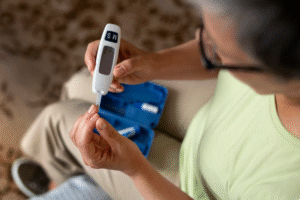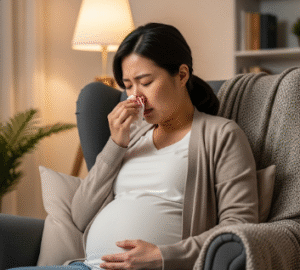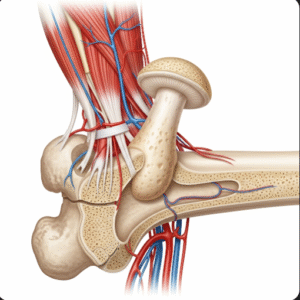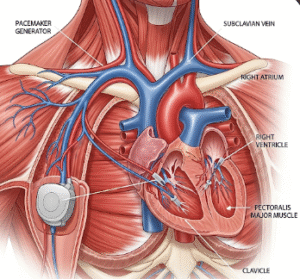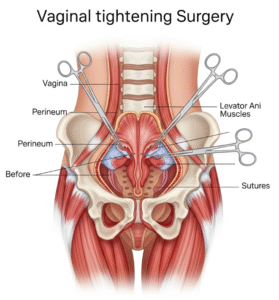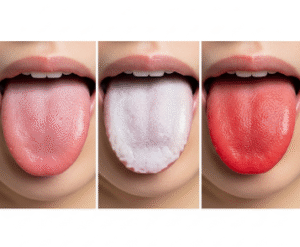What it is
Home oxygen therapy (HOT) is a medical treatment in which patients receive supplemental oxygen in their home environment to maintain adequate blood oxygen levels. It is commonly prescribed for individuals with chronic respiratory conditions, such as chronic obstructive pulmonary disease (COPD), severe asthma, interstitial lung disease, pulmonary fibrosis, or heart failure that leads to hypoxemia (low blood oxygen levels).
Key points:
- Delivered through devices such as concentrators, portable oxygen cylinders, or liquid oxygen systems.
- Administered via nasal cannulas, face masks, or transtracheal catheters.
- Aimed at reducing symptoms of low oxygen, improving quality of life, and preventing complications.
- Often part of a comprehensive respiratory management plan including medications, pulmonary rehabilitation, and lifestyle modifications.
Why it’s done
Home oxygen therapy is prescribed to:
- Correct hypoxemia: Maintain oxygen saturation typically above 88–90% at rest, during activity, or sleep.
- Relieve symptoms: Reduce shortness of breath, fatigue, and confusion associated with low oxygen.
- Improve exercise tolerance and daily function: Allows patients to perform basic activities of daily living with less strain.
- Prevent complications: Long-term oxygen therapy can reduce pulmonary hypertension, right heart failure, and hospitalizations.
- Enhance survival: Evidence shows that in select patients with severe chronic respiratory disease, oxygen therapy can improve longevity.
Note: HOT is prescribed after a careful evaluation of oxygen levels using pulse oximetry or arterial blood gas analysis.
Alternatives
Although home oxygen therapy is highly effective, alternatives or complementary options include:
- Short-term oxygen therapy: Used only during acute exacerbations or hospitalizations.
- Portable oxygen for activity: Oxygen delivered only during exertion, not continuously.
- Non-invasive ventilation (NIV): CPAP or BiPAP machines may assist in patients with chronic respiratory failure.
- Medications: Bronchodilators, corticosteroids, and other treatments to improve lung function.
- Pulmonary rehabilitation: Exercise, breathing techniques, and lifestyle modifications to reduce oxygen demand.
Important: These alternatives may reduce symptoms but cannot fully replace oxygen supplementation in patients with chronic hypoxemia.
Preparation
Proper preparation ensures safe and effective home oxygen therapy:
Before starting HOT:
- Medical evaluation: Includes blood oxygen measurement, lung function tests, and physician assessment.
- Device selection: Depending on needs, a concentrator, portable cylinder, or liquid oxygen system may be chosen.
- Prescription and training: Patients receive detailed instructions from a healthcare professional on device use, safety, and maintenance.
- Home assessment: Ensuring adequate space, ventilation, and electrical supply for oxygen equipment.
- Emergency planning: Instruction on what to do in case of power failure or equipment malfunction.
Patient education includes:
- Proper handling of oxygen equipment.
- Avoiding open flames, smoking, and flammable materials near oxygen.
- Regular cleaning and maintenance of nasal cannulas or masks.
How it’s done
Home oxygen therapy is administered via specialized delivery systems:
1. Oxygen Concentrators:
- Device extracts oxygen from ambient air, delivering highly concentrated oxygen.
- Suitable for continuous or intermittent use.
- Requires electricity and routine filter maintenance.
2. Compressed Oxygen Cylinders:
- Pre-filled cylinders provide portable oxygen for mobility and travel.
- Cylinders must be secured upright and replaced when empty.
3. Liquid Oxygen Systems:
- Oxygen stored in cryogenic liquid form, allowing high-capacity and portability.
- Evaporates into gas as it’s used for inhalation.
Delivery methods:
- Nasal cannula: Soft tubing inserted into nostrils; preferred for comfort.
- Face mask: Covers nose and mouth; used when higher oxygen flow is required.
- Transtracheal catheter: Direct oxygen delivery through a small incision; less common.
Monitoring:
- Regular oxygen saturation checks using pulse oximetry.
- Adjustments made by healthcare professionals based on activity level, sleep, and symptoms.
Recovery and Benefits
Although HOT is a long-term therapy rather than a procedure, patients typically experience gradual improvements:
- Within days to weeks: Reduced shortness of breath and fatigue.
- Improved exercise tolerance: Easier performance of daily activities.
- Better sleep quality: Fewer nighttime hypoxic episodes.
- Reduced hospitalizations: Patients with chronic lung disease experience fewer exacerbations.
- Enhanced quality of life: Patients can maintain independence and mobility.
Note: Continuous adherence is crucial for maximum benefit and prevention of complications.
Complications
Home oxygen therapy is generally safe when used correctly, but potential risks include:
- Fire hazards: Oxygen supports combustion; smoking or open flames near equipment is dangerous.
- Skin irritation: Nasal cannulas or masks may cause pressure sores or dryness.
- Nasal dryness or nosebleeds: Common with high-flow oxygen.
- Infection risk: Improper cleaning of equipment may lead to respiratory infections.
- Oxygen toxicity: Rare, usually with high-flow oxygen over prolonged periods.
- Equipment malfunction: Can cause interruption in oxygen supply.
Prevention tips:
- Follow manufacturer and clinician instructions for device use.
- Avoid flames and flammable materials near oxygen.
- Maintain cleanliness of tubing, masks, and cannulas.
- Regularly check device function and oxygen flow.
Treatment Options in Korea
Home oxygen therapy is widely available and well-regulated in Korea:
Key features:
- Prescribed by pulmonologists or respiratory specialists after thorough evaluation.
- Devices available through hospitals, specialized medical equipment suppliers, and home care services.
- Includes training, delivery, and maintenance support for patients and caregivers.
- Part of comprehensive chronic respiratory care, often combined with medications and rehabilitation.
- Korean hospitals follow strict safety standards for oxygen equipment and patient education.
Summary: Home oxygen therapy in Korea is a safe, effective, and essential treatment for patients with chronic hypoxemia. When used correctly, HOT improves symptoms, enhances mobility, prevents complications, and supports a better quality of life, allowing patients to safely manage their condition at home.



